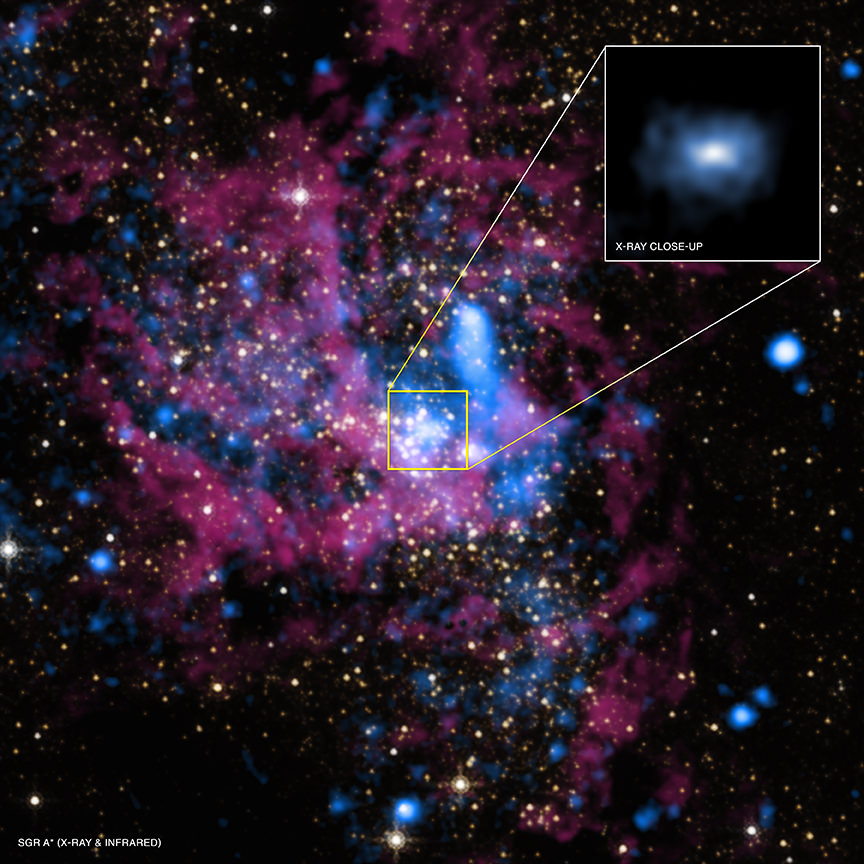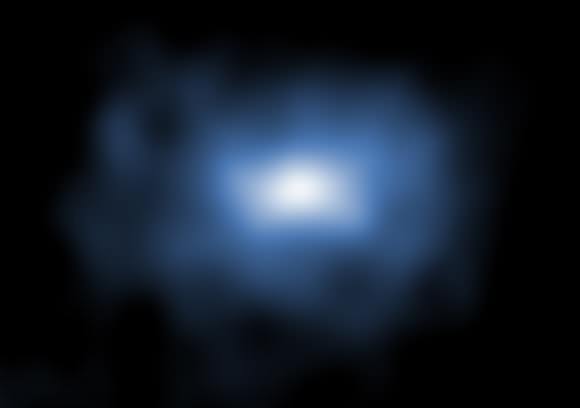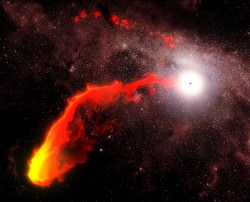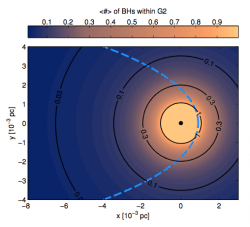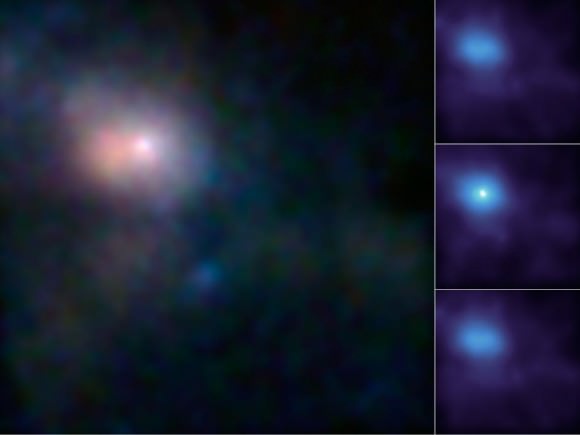At the center of the Milky Way Galaxy resides the Supermassive Black Hole (SMBH) known as Sagittarius A*. This tremendous black hole measures an estimated 44 million km in diameter, and has the mass of over 4 million Suns. For decades, astronomers have understood that most larger galaxies have an SMBH at their core, and that these range from hundreds of thousands to billions of Solar Masses.
However, new research performed by a team of researchers from Keio University, Japan, has made a startling find. According to their study, the team found evidence of a mid-sized black hole in a gas cluster near the center of the Milky Way Galaxy. This unexpected find could offer clues as to how SMBHs form, which is something that astronomers have been puzzling over for some time.
The study, titled “Millimetre-wave Emission from an Intermediate-mass Black Hole Candidate in the Milky Way“, recently appeared in the journal Nature Astronomy. Led by Tomoharu Oka, a researcher from the Department of Physics and the School of Fundamental Science and Technology at Keio University, the team studied CO–0.40–0.22, a high-velocity compact gas cloud near the center of our galaxy.
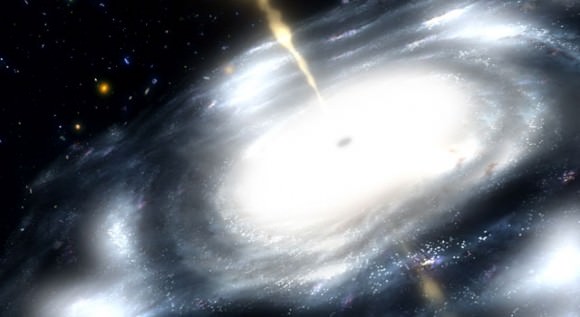
This compact dust cloud, which has been a source of fascination to astronomers for years, measures over 1000 AU in diameter and is located about 200 light-years from the center of our galaxy. The reason for this interest has to do with the fact that gases in this cloud – which include hydrogen cyanide and carbon monoxide – move at vastly different speeds, which is something unusual for a cloud of interstellar gases.
In the hopes of better understanding this strange behavior, the team originally observed CO–0.40–0.22 using the 45-meter radio telescope at the Nobeyama Radio Observatory in Japan. This began in January of 2016, when the team noticed that the cloud had an elliptical shape that consisted of two components. These included a compact but low density component with varying velocities, and a dense component (10 light years long) with little variation.
After conducting their initial observations, the team then followed up with observations from the Atacama Large Millimeter/submillimeter Array (ALMA) in Chile. These confirmed the structure of the cloud and the variations in speed that seemed to accord with density. In addition, they observed the presence of radio waves (similar to those generated by Sagittarius A*) next to the dense region. As they state in their study:
“Recently, we discovered a peculiar molecular cloud, CO–0.40–0.22, with an extremely broad velocity width, near the center of our Milky Way galaxy. Based on the careful analysis of gas kinematics, we concluded that a compact object with a mass of about 105 [Solar Masses] is lurking in this cloud.”

The team also ran a series of computer models to account for these strange behaviors, which indicated that the most likely cause was a black hole. Given its mass – 100,000 Solar Masses, or roughly 500 times smaller than that of Sagittarius A* – this meant that the black hole was intermediate in size. If confirmed, this discovery will constitute the second-largest black hole to be discovered within the Milky Way.
This represents something of a first for astronomers, since the vast majority of black holes discovered to date have been either small or massive. Studies that have sought to locate Intermediate Black Holes (IMBHs), on the other hand, have found very little evidence of them. Moreover, these findings could account for how SMBHs form at the center of larger galaxies.
In the past, astronomers have conjectured that SMBHs are formed by the merger of smaller black holes, which implied the existence of intermediate ones. As such, the discovery of an IMBH would constitute the first piece of evidence for this hypothesis. As Brooke Simmons, a professor at the University of California in San Diego, explained in an interview with The Guardian:
“We know that smaller black holes form when some stars die, which makes them fairly common. We think some of those black holes are the seeds from which the much larger supermassive black holes grow to at least a million times more massive. That growth should happen in part by mergers with other black holes and in part by accretion of material from the part of the galaxy that surrounds the black hole.
“Astrophysicists have been collecting observational evidence for both stellar mass black holes and supermassive black holes for decades, but even though we think the largest ones grow from the smallest ones, we’ve never really had clear evidence for a black hole with a mass in between those extremes.”
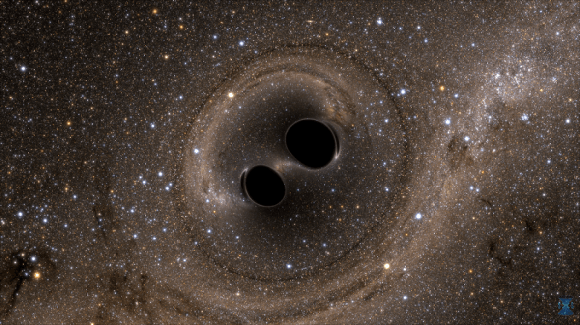
Further studies will be needed to confirm the presence of an IMBH at the center of CO–0.40–0.22. Assuming they succeed, we can expect that astrophyiscists will be monitoring it for some time to determine how it formed, and what it’s ultimate fate will be. For instance, it is possible that it is slowly drifting towards Sagittarius A* and will eventually merge with it, thus creating an even more massive SMBH at the center of our galaxy!
Assuming human beings are around to detect that merger, its fair to say that it won’t go unnoticed. The gravitational waves alone are sure to be impressive!
Further Reading: Nature Astronomy


